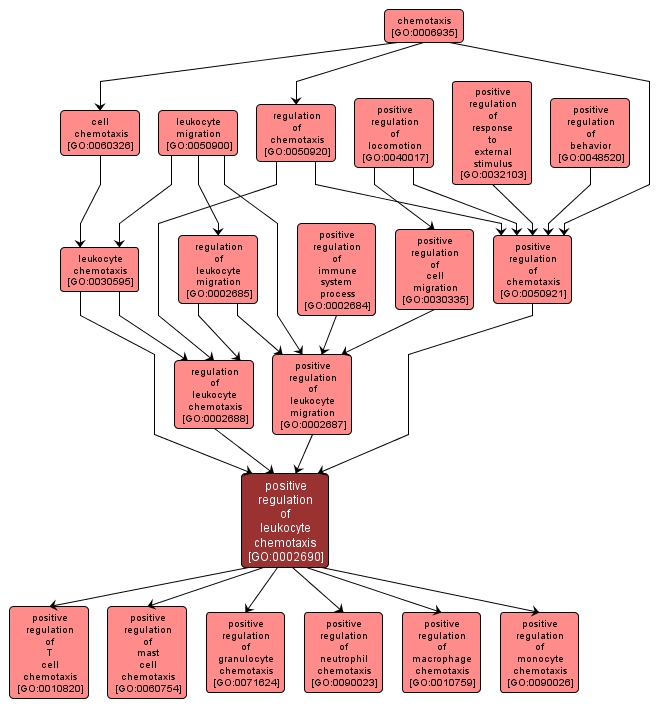GO TERM SUMMARY
|
| Name: |
positive regulation of leukocyte chemotaxis |
| Acc: |
GO:0002690 |
| Aspect: |
Biological Process |
| Desc: |
Any process that activates or increases the frequency, rate, or extent of leukocyte chemotaxis. |
Synonyms:
- up-regulation of leukocyte chemotaxis
- activation of leukocyte chemotaxis
- stimulation of leukocyte chemotaxis
- up regulation of leukocyte chemotaxis
- positive regulation of immune cell chemotaxis
- upregulation of leukocyte chemotaxis
- positive regulation of leucocyte chemotaxis
|
|

|
INTERACTIVE GO GRAPH
|














